What is a Dialogue and How Important Is It?
Since the beginning of time, humans have relied on conversations to communicate with one another. Face-to-face conversations held a lot of advantages as people can sense the tone, see the gestures, and determine the expressions. None of those are easy to translate on paper. Creating dialogues in your story, with the help of speech tags, can bridge a little of that gap and help the reader imagine how the conversation would really go. But what is a dialogue?

With writing a book, dialogue plays a huge role in ensuring that your readers enjoy the experience. Dialogues add a sense of realism to your story and help your reader get a better grip on the scene and what is going on. Today we’re here to explain what a dialogue is and why it’s essential to your book.
This is part one of a new series on dialogue we’ll be starting here on our blog.
What is a Dialogue?
When it comes to the most common meaning of the word, a dialogue can refer to one of two things: an outer conversation and an inner thought voiced out. The first refers to when a character speaks or communicates with someone else or a group of people. The second refers to when a narrator conveys their inner thoughts and feelings to the reader or an audience.
It all boils down to conversation. Whether it’s between two or more people, or one person addressing an audience, it doesn’t matter. Though today we will focus on outer dialogue rather than inner dialogue.
So why do we need dialogue in books? Contrary to popular belief, a dialogue doesn’t merely serve one specific purpose—that of carrying on a conversation. If you take a close look at all of your favorite books, you’ll slowly realize that authors use dialogue for various reasons. Today we will address five of the most popular reasons to use dialogue and give you examples to see them in use.
1. Shows Interactions Between Characters
One thing that’s easy to see in dialogue rather than narration is the relationship between two characters. As with writing, the adage of ‘show don’t tell’ is popular. Rather than tell the reader these two characters don’t get along, it’s better to show them in a conversation that they don’t get along. Or maybe show how close they are as friends or family. Whatever the relationship, dialogue can showcase it quite well.
Let’s take this example from Every Last Word by Tamara Ireland Stone.
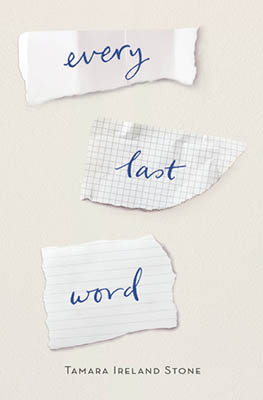
“When am I going to stop making mistakes, Sue?”
Her laugh catches me off guard and I look up at her wide-eyed and confused. “Why on earth would you want to do that?” she asks.
I stare at her.
“Mistakes. Trial and error. Same thing. Mistakes are how we learned to walk and run and that hot things burn when you touch them. You’ve made mistakes all your life and you’re going to keep making them.”
“Terrific.”
“The trick is to recognize your mistakes, take what you need from them, and move on.”
“I can’t move on.”
“You can’t beat yourself up, either.”
Looking at this conversation makes it very obvious that the two characters are comfortable with one another. The lead character doesn’t mind sharing her inner thoughts with her therapist, Sue. Sue, as well, isn’t one to beat around the bush. It speaks volumes that instead of getting offended by Sue’s laughter; merely confuses the lead.
2. Sets the Mood
Yes, a few descriptive and well-embellished paragraphs can help you set the mood in your story. However, dialogue can do that as well, and far more quickly. In fact, many people skim through large blocks of text, their eyes going straight for the dialogue. So why not use that to your advantage?
Let’s take this example from Breathe, Annie, Breathe by Miranda Kenneally.
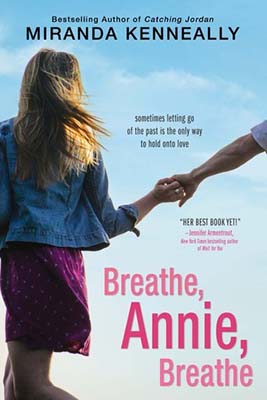
“I can’t. I can’t. It hurts.”
My stomach feels like it got turned inside out. I lean over and get sick again, right in front of him. I clutch my side. He suddenly stands up. I grossed him out.
But then I feel him sitting down behind me, stretching his legs to cradle mine. His arms circle my middle. “I’ve got you. Relax.”
I lean against his chest, working to catch my breath. […]
Jeremiah whispers in my ear, “You are going to finish this for him. You will.”
That just makes me cry harder. I blink away my tears, staring at Jeremiah over my shoulder.
“Kyle’s counting on you, Annie.”
In this scene, Annie, who’d been training hard for a marathon, was on the verge of giving up. It had been her boyfriend’s dream to race a marathon before he passed away, so she’d decided on doing it for him. But the training gets to her, the arduous practice and the effect it has on her body makes her sick. The scene is charged with anxious energy, changing as her friend Jeremiah comes to her aid. He supports her and reminds her of the reason she’s doing this.
3. Develops the Plot
Instead of driving your plot through descriptions, you can drive it through meaningful conversations between the characters. Help it further along by making the characters talk about coming plans or even the next step in a current one.
Let’s take this example from Clockwork Angel by Cassandra Clare.
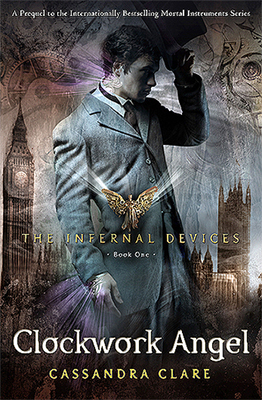
“She’s advanced wonderfully since then, don’t you think, sister?” Mrs. Black said. “Given what we had to work with in the beginning—she didn’t even know what she was.”
“Indeed, she was absolutely unformed clay,” Mrs. Dark agreed. “We have truly worked a miracle here. I can’t see how the Magister could fail to be pleased.”
Mrs. Black gave a little gasp. “Does that mean-Do you think it’s time?”
“Oh, absolutely, my dear sister. She’s as ready as she’ll ever be. It’s time for our Theresa to meet her master.” There was a gloating note in Mrs. Dark’s voice, a sound so unpleasant that it cut through Tessa’s blinding dizziness. What were they talking about? Who was the Magister? She watched through lowered eyelashes as Mrs. Dark jerked the silk bellpull that would summon Miranda to come and take Tessa back to her room. It appeared that the lesson was over for today.
“Perhaps tomorrow,” Mrs. Black said, “or even tonight. If we told the Magister she was ready, I cannot imagine he would not hurry here without delay.”
In this scene, the two sisters are rather pleased with the results of their training of said Tessa. A girl who didn’t even realize she had any special powers and did not know who the mastermind behind her abduction and training even was. The two sisters are discussing whether it’s time to finally reveal to Tessa who the master was.
4. Portrays a Revelation
When something surprising or shocking happens, it’s better to show the characters being surprised/shocked rather than saying it. A revelation of any sort would be more interesting to witness firsthand.
Let’s take this example from Miss Peregrine’s Home for Peculiar Children by Ransom Riggs.
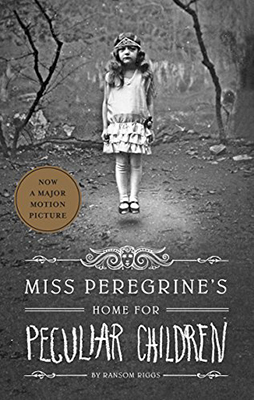
“You’ve been on the island for several days now,” Miss Peregrine said. “Why have you dawdled so long before paying us a visit?”
“I didn’t know you were here,” I said. “How’d you know I was?”
“I’ve been watching you. You’ve seen me as well, though perhaps you didn’t realize it. I had assumed my alternate form.” She reached up and pulled a long gray feather from her hair. “It’s vastly preferable to assume the shape of a bird when observing humans,” she explained.
My jaw dropped. “That was you in my room this morning?” I said. “The hawk?”
“The falcon,” she corrected. “A peregrine, naturally.”
“Then it’s true!” I said. “You are the Bird!”
“It’s a moniker I tolerate but do not encourage,” she replied.
It is clear from the context that the lead, Jacob, has had quite a few revelations since he’s arrived at the island. In this scene, however, he realizes that the bird that has been trailing him around the island was none other than Miss Peregrine herself. Even though he was now aware there were people with ‘peculiar’ powers, it still surprised him.
5. Displays Conflict
Another fun thing to read in dialogue form rather than in a descriptive paragraph is an argument taking place. Or any sort of conflict between two characters, whether hostile or toned down. Sometimes it would be fun to add it as passive-aggressive and sarcastic. Yelling and shouting aren’t necessary all the time.
Let’s take this example from Vengeful by V. E. Schwab.
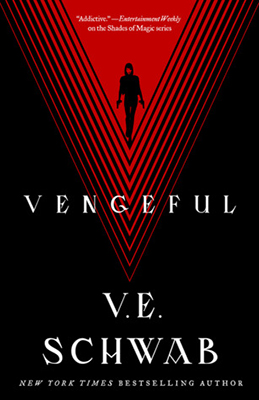
“I know you want to believe that all EOs are worth saving, but we aren’t.”
“We don’t decide who lives and who dies,” said Stell tersely. “We don’t condemn EOs without confrontation.”
“Now who’s letting their ideals cloud their judgment?”
“Marcella will be offered the same opportunity as every other EO we engage—to come willingly. If she refuses, and the on-site team is unable to safely—”
“Safely?” snarled Eli. “This woman can reduce people to ash with a single touch. She can decay metal and stone. Do you value an EO’s life above a human’s? Because you are sending your agents on a suicide mission to sate your pride—”
“Stand down,” said Stell.
Eli exhaled through clenched teeth. “If you don’t kill her now, you’ll wish you had.”
Stell turned to go. “If you have no other suggestions—”
“Send me.”
Stell glanced back, raising a thick brow. “What was that?”
“You want other options? Ones that won’t get innocent humans killed?” Eli spread his arms. “Our abilities are complementary. She ruins. I regenerate. There’s a cosmic elegance to it, don’t you think?”
“And what if her power is faster?” asked Stell.
Eli’s arms fell back to his sides. “Then I die,” he said simply.
In this scene, Eli and Stell are discussing the best way to deal with a woman, an EO (ExtraOrdinary), who has been murdering people across the city. But due to her particular ability, no one can stop her. Stell, the director of an organization to contain and neutralize EOs, believes that EOs are human and deserve a chance before they’re killed. Eli, a hostage EO, believes that his personal ability makes him the perfect candidate to kill the woman. Clearly, they don’t see eye to eye on how to deal with her.

Conclusion
Now that you know what a dialogue is and what purposes it serves, there’s no question of how vital it is to your book. One point to keep in mind is that adding a lot of dialogue can deter from its main purpose. Communication is always important, so make sure it sounds authentic and not overdone.
Stay tuned for the second part of this series where we will discuss how to write your dialogue, format it, and give you some helpful tips along the way.
.
Read More
10 Tips To Make Your Dialogues Memorable
6 Fun Writing Strategies to Help You Write More
10 Tips to Write a Book Blurb That Sells















